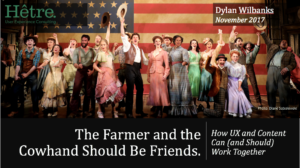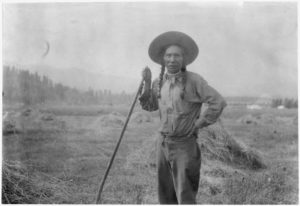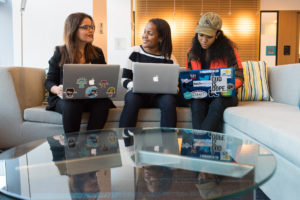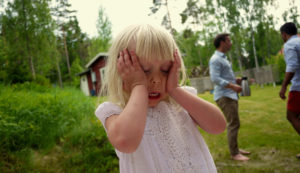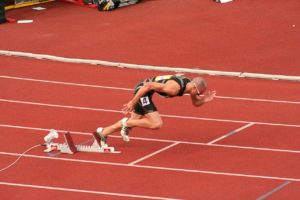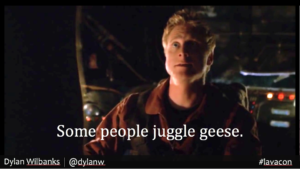Our sewer overflowed. Over the last half century the iron pipe from the house came out of alignment with our deteriorating concrete sewer line, creating a backup that flooded our basement bathroom with… sewage. At 7pm on a Saturday night.
I’d known this was a possibility for a long time, but I wasn’t ready for this moment. And it came in my first year of starting my own business.
Could I have prevented this from happening? No, not without spending that money to rip out the line years ago (which I didn’t have). This was a catastrophe. But I could have been ready. This was always a possibility. After all, my house produced sewage, and it had to go somewhere. I could have been ready with savings. I could have been ready with a mop.
And I started thinking about the other sewage overflows in the world right now — with sexual assault, harassment, and the problems of bad people in our good industry.
A few years ago, we argued over the problem men at conferences and the need for conferences to think long and hard about codes of conduct.
There was resistance.
We cannot just cut them off, they said. They’re important to our industry. It’s trial without jury. Codes of conduct are just words. Insurance companies don’t like them. Besides, this conference is safe! I’ve never heard anything bad happening, so it must be safe!
And then came this year. Sexual harassment at Uber. Harvey Weinstein. Matt Lauer. The Molester-in-Chief. The spotlight has turned onto the problem men. And conferences, again, are under pressure around codes of conduct and dealing with the bad people in this industry.
The signs of the impending sewer disaster were there. The downstairs toilet had been acting weird for months. Stuff appeared in the toilet bowl that… no one could have put there. Things smelled wet in the basement. I couldn’t piece it all together, not until the strong sewage smell led me to splash into a wet floored bathroom with an overflowing toilet.
The signs were there. I didn’t know how to interpret them, though.
In the UX world, the signs are more visible. Women pass information around — whom to avoid, whom to never be alone with. Sometimes the information bubbles up into blog posts, but the women who post those posts are dismissed. They’re crazy, wronged, and come on, we’re talking about The Guy Who Wrote That Book And Did That Talk, he is known! Conferences shrug and keep giving the offenders a platform. Those that speak out end up blacklisted, threatened back into silence by the offenders, or at least marked as “problems” by others.
The smell is easy to ignore if you’re ignorant to where it’s coming from — or you’re worried about your ability to sell out your conference.
The next scandal in the UX world is already here, and we’re ignoring it.
So the plumbers lined my side sewer, which was crumbling from 55 years of neglect. They also replaced the old downstairs toilet (older than me). I’ve mopped, disinfected, bleached, scrubbed, and fanned the garage bathroom. I will soon need to decide if the wood paneling, which only took half an inch of water, should get ripped off completely and replaced. The end result was a horrible feeling that comes with watching a huge amount of money go down the drain. And worse still, my homeowners’ insurance didn’t cover sewer overflows.
All told, this disaster cost me well over $10,000.
I wasn’t prepared. I didn’t check the sewer before we bought 7 years ago. I ignored the wet smell until it was too late. I thought nothing of the odd scenes in the bathroom when I went in there. I lived in blissful denial of the growing problem. If anyone had asked me, I’d have said everything was perfectly fine in the house. And it wasn’t.
Are conferences prepared?
Codes of conduct are a nuisance. They make it clear to attendees that there could be problems. The mere idea that someone could be unsafe could turn someone off.
But, they’re also honest about the reality of what happens at a conference. No matter how much conference organizers try to strictly control the environment, harassment and assault happen anyway. It’s only a matter of time before the “best” conference with “no incidents” has an incident. And when that day comes, organizers need to be clear about what a victim can do, how you will proceed as an organization, and learn from the experience to make sure you can prevent it from happening again.
No amount of event insurance can buy the trust of people. Only honesty, transparency, and integrity will engender and rebuild trust.
When we sense something off about the program, what happens when we raise our hands and ask? When we see something untoward, how do conferences respond? When we see them give a platform to a known abuser or a serial harasser, how do we respond — and how do they? (I’m reminded of the various responses over the years conference organizers have given Christina Wodtke to her complaints.)
Too many of us ignore the wet smells and weird scenes. Too many of us let conferences and other events insist things are fine and no one is going to get hurt. Only in their case, when the sewage does finally back up and the floor floods with shit, it’s not a health hazard; it’s a human tragedy, and the victims are left with the pain and suffering — and the scorn.
I’ve been very clear in the past: I will not speak at events without a code of conduct. But let me go beyond that:
I will not attend events that do not take into account there are people in my industry who prey on and harass others.
If they choose to ignore the smell of shit wafting across our industry, or they try to explain it away with bromides about “we’re all adults” or how they’ve designed away the problems, they will not get my business. If you still think that, there’s an “unsinkable” boat at the bottom of the Atlantic you should check out.
You earn trust with honesty, transparency, and integrity. To ignore the predators is dishonest. To not clearly state what you consider good conduct and how people can report it is opaque. And to not act on the information you have is evil.
And if you believe that in this time of Trump, Weinstein, Lauer, and Uber you can continue to operate this way, then I wish you the best. But I do not trust that your conference is any safer for me (and others) to attend than when I had to wade through my shit-covered bathroom that Saturday night.
UX world, fix your goddamned sewer problem.

